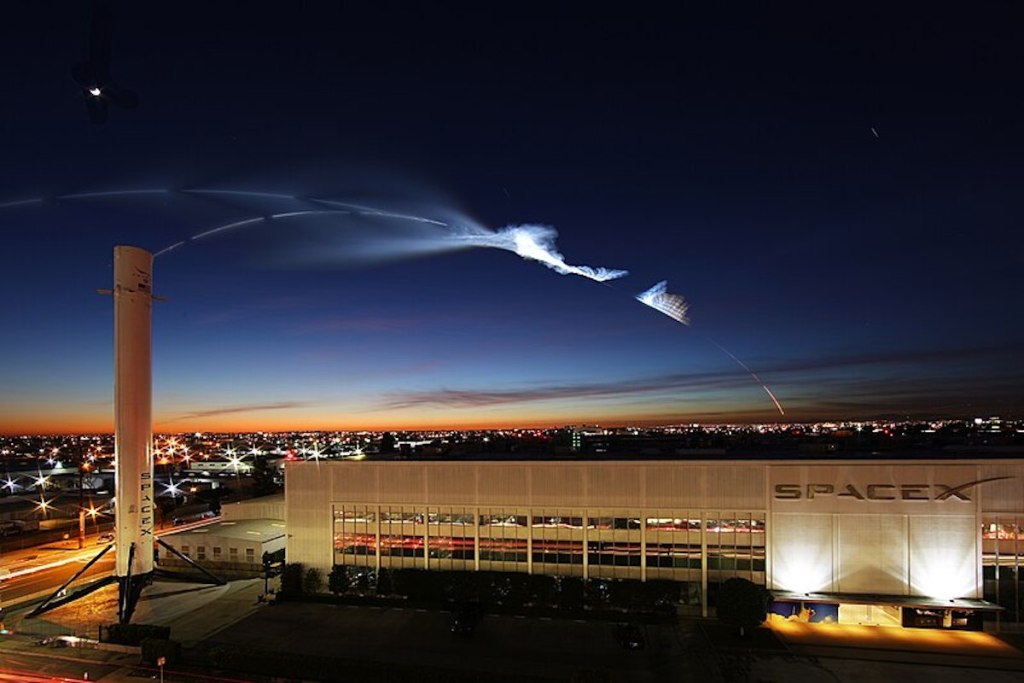On April 10, the California Coastal Commission postponed a decision on SpaceX’s proposal to increase launches at Vandenberg Space Force Base (VSFB) from six to 36, and landings to 12 annually. Concerns were raised about distinguishing federal and private activities, as well as impacts on residents and the environment.
Since Vandenberg is federal property, the commission lacks authority to approve or reject projects. Instead, the commission can only approve measures based on consistency with the California Coastal Management Program. The discussion returned after commissioners discovered that temporary closures and evacuations at Jalama Beach due to SpaceX activity exceeded the annual maximum within the first few months of the year.
After a series of public complaints about impacts to wildlife, noise disturbances, marine debris, and public notifications, the commission requested more time to understand the complexities of the situation. The most pressing question in the room was whether all commercial space launches at VSFB can be considered federal activity.
When asked how many launches at VSFB benefit the Department of Defense (DOD), Colonel Bryan Titus, vice commander for Space Launch Delta 30, said that 25 percent hold DOD satellites and payloads, but argued that all SpaceX launches support the DOD and its allies.
“I just don’t think that SpaceX should be able to skirt the requirements for a Coastal Development Permit when its clear intent is to conduct primarily for-profit business activity and not federal activity,” said Kristina Kunkel, the Environmental Policy Director of the California State Controller’s Office.
Staff reminded the commissioners that they and the Space Force are equal powers, and the federal agency could still decide to move forward regardless of their decision. If there was a “strong consensus” to deny federal consistency, it could only be resolved through mediation or litigation.
The commission tasked staff with addressing several remaining questions before the item returned for a vote. These include a suggestion to segregate DOD and private activities for federal consistency, assessing the Space Force’s capability to send push notifications for launch warnings to residents, and evaluating the cumulative environmental impacts and fees related to lost nine-volt batteries dropped into the ocean by weather balloons.
Prior to the meeting, staff had recommended four measures in response to concerns over Jalama Beach access. The Department of the Air Force in coordination with SpaceX would provide internet service and vacancy signage on Highway 1. They also proposed a shuttle service to evacuate and return campers during launch times, and, in collaboration with the Lompoc Unified School District and SpaceX, funding to transport 3rd graders to visit Surf Beach and Ocean Park on an annual basis.
Col. Titus assured the commission that these expenses would not be on the taxpayer’s dime.
These questions and measures will be addressed when the Commission returns to the topic in May.
Premier Events
Fri, Nov 22
11:00 AM
Santa Barbara
Santa Barbara Antique & Vintage Show & Sale
Fri, Nov 22
6:00 PM
Santa Barbara
Introduction to Crochet Workshop
Fri, Nov 22
7:30 PM
Carpinteria
Rod Stewart VS. Rolling Stones Tribute Show
Fri, Nov 22
9:00 PM
Santa Barbara
Numbskull Presents: Jakob’s Castle
Sat, Nov 23
11:00 AM
Santa Barbara
Santa Barbara Antique & Vintage Show & Sale
Sat, Nov 23
12:00 PM
Santa Barbara
Fall 2024 Healing Arts Faire
Sat, Nov 23
7:30 PM
Santa Barbara
SBCC Theatre Arts Department presents “Mrs. Bob Cratchit’s Wild Christmas Binge”
Sun, Nov 24
11:00 AM
Santa Barbara
Santa Barbara Antique & Vintage Show & Sale
Sun, Nov 24
6:00 PM
Santa Barbara
¡Viva el Arte de Santa Bárbara! Mariachi Garibaldi de Jaime Cuellar
Sun, Dec 01
5:00 PM
Santa Barbara
Paseo Nuevo Tree Lighting Ceremony
Fri, Nov 22 11:00 AM
Santa Barbara
Santa Barbara Antique & Vintage Show & Sale
Fri, Nov 22 6:00 PM
Santa Barbara
Introduction to Crochet Workshop
Fri, Nov 22 7:30 PM
Carpinteria
Rod Stewart VS. Rolling Stones Tribute Show
Fri, Nov 22 9:00 PM
Santa Barbara
Numbskull Presents: Jakob’s Castle
Sat, Nov 23 11:00 AM
Santa Barbara
Santa Barbara Antique & Vintage Show & Sale
Sat, Nov 23 12:00 PM
Santa Barbara
Fall 2024 Healing Arts Faire
Sat, Nov 23 7:30 PM
Santa Barbara
SBCC Theatre Arts Department presents “Mrs. Bob Cratchit’s Wild Christmas Binge”
Sun, Nov 24 11:00 AM
Santa Barbara
Santa Barbara Antique & Vintage Show & Sale
Sun, Nov 24 6:00 PM
Santa Barbara
¡Viva el Arte de Santa Bárbara! Mariachi Garibaldi de Jaime Cuellar
Sun, Dec 01 5:00 PM
Santa Barbara

